Barbier, George
1882 – 1932
French
George (without the customary “s”) Barbier studied at the École des Beaux Arts in Paris and began his career as a costume and set designer for the Ballets Russes. In the early 1900s, his drawings of Nijinsky and Karsavina and his work for Diaghilev attracted the attention of publishing luminary Lucien Vogel who hired him to collaborate in illustrating the deluxe fashion periodical “Gazette du Bon Ton”. Barbier’s lavish creations, executed in pochoir, were sensational and he became very much in demand as an illustrator.
Despite his fascination with Greek vases and classical art, Barbier is considered the quintessential Art Deco artist. It was not unusual at the time for an artist to be competent in many fields, and Barbier exemplified this ideal. His wide range of expression included paintings, fashion and book illustration, posters, textile and wallpaper design, advertising graphics and his first love, set and costume design. In each instance, Barbier imbued the subject with an elegance and simplicity typical of the Art Deco movement, but uniquely his own. His models were always poised and impeccably dressed. The women possessed qualities of both naïveté and sophistication and the men were suave and handsome.
Barbier actually lived the life style of the models he depicted. He was an elegant and dapper man, and very popular. His designs for Poiret, Worth, and Lanvin, as well as his involvement with the ballet, insured that he mingled with le Haute Monde of Parisian society. The 1920s were a time of extravagance and emancipation and Barbier partook of every excess. The end of Art Deco’s Golden Age was his demise as well. He died quite young, having lived every moment of his life with the enthusiasm of the time.
-
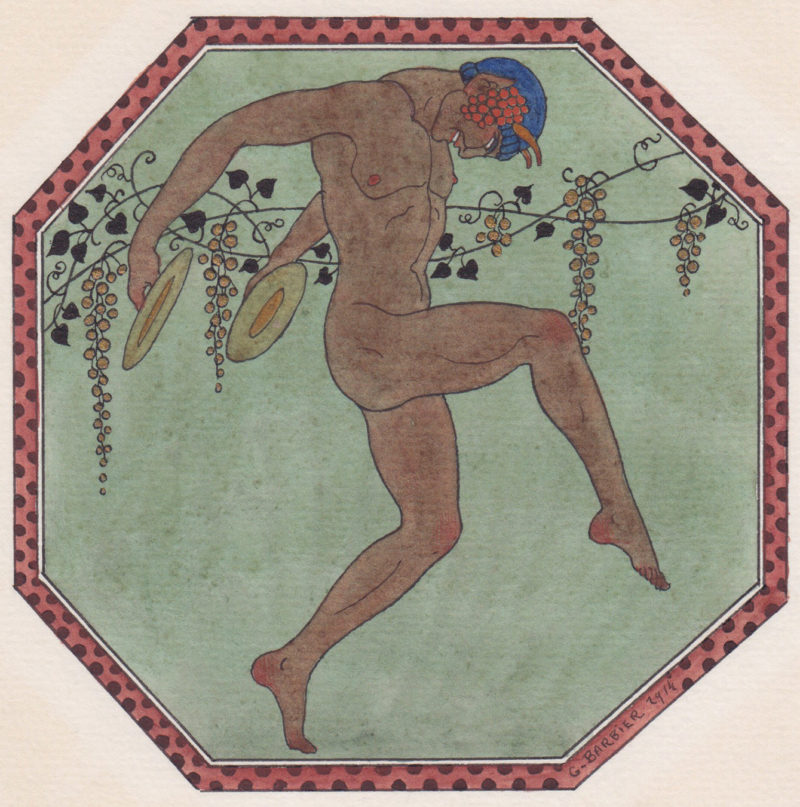
Barbier, George
(1882 - 1932) French$5,500.
“Illustration for “Les Chansons de Bilitis””, 1914
Original watercolor
4 ½" x 4 ½"
Framed
Signed and dated in ink in image -
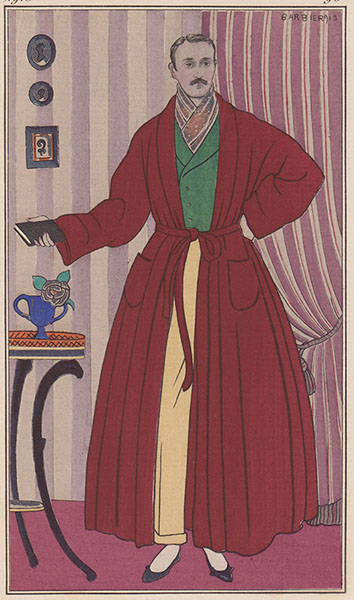
Barbier, George
(1882 - 1932) French$225.
“Robe de chambre”, 1913
Pochoir and etching
Published in “Journal des dames et des modes”; Issue 41, Plate 96
7" x 4 ¼"
Printed signature and date in plate -
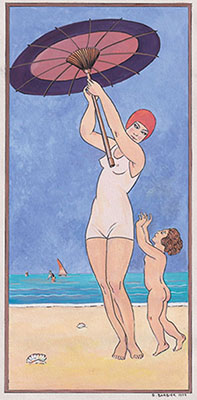
Barbier, George
(1882 - 1932) French$4,500.
“Au Lido”, 1923
Original watercolor
Preparatory drawing for the center figures for the pochoir titled "Au Lido" and published in the album "Les Bonheurs du Jour où les Grâces à la Mode", 1924
8 ¾" x 4 3/16"
Framed in original frame
Signed and dated in ink in margin -
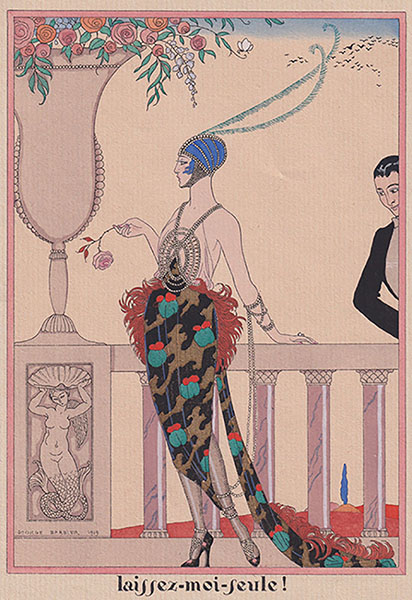
Barbier, George
(1882 - 1932) French$750.
“Laissez-moi seule!”, 1919
Pochoir
Published in "Feuillets d'Art"
10 ½" x 7 ¼"
Printed signature in image -
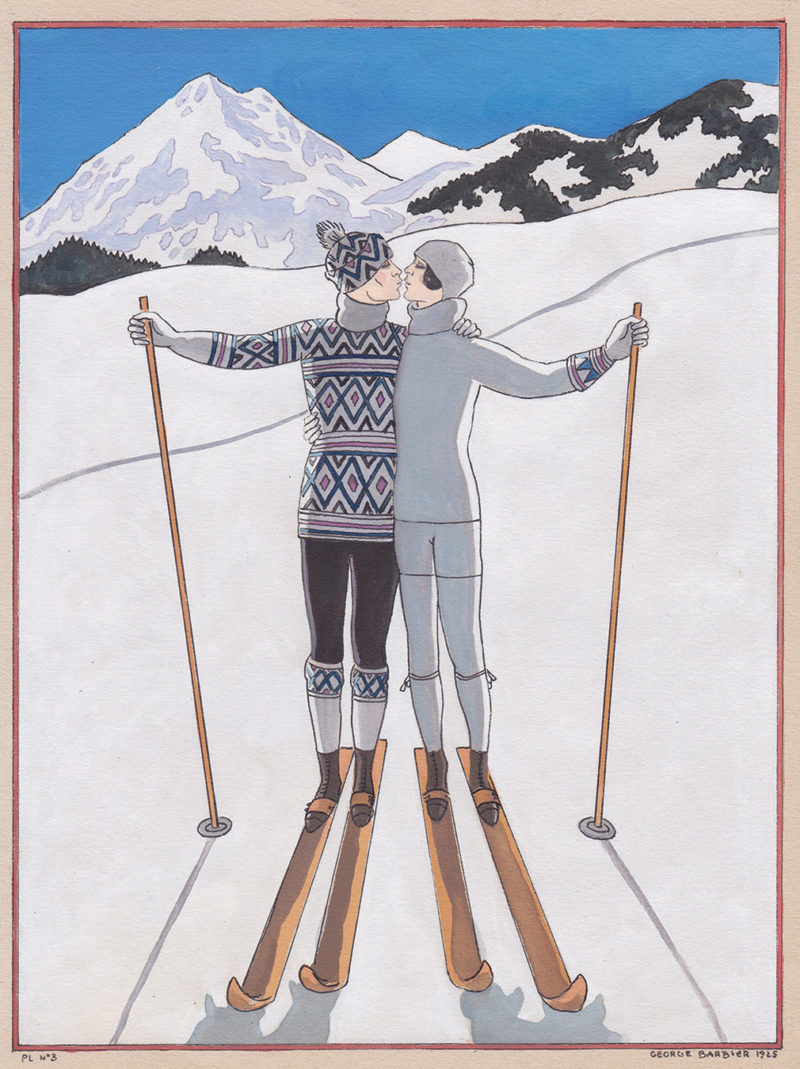
Barbier, George
(1882 - 1932) FrenchSOLD
“L’Hiver”, 1925
Original watercolor and gouache
Published in “Falbalas et Fanfreluches 1926”, Plate 3
9 ½" x 7 ⅛"
In original frame
Signed, dated and annotated “PL Nº 3” in ink in margin
